Not everyone reviews cameras or has a camera blog. The fact that you are here suggests you at least like old film (and some digital) cameras. You probably have one or two of your own, or maybe you’re a retired dentist with thousands of them. Whatever the case, I know I am fortunate to have access to a huge number of cool and interesting cameras that I can pick up any time I want.
In a recent private chat among other bloggers of sites like mine, we thought it would be fun if several of us revisited some of the best cameras we’ve used this year. We decided to pick three cameras which have stood out or in some other way have been more memorable than others. The cameras could be ones we’ve already written about or those that we plan on talking about next year.
Here are my three, but if you’re interested in reading about what other bloggers have highlighted as their three cameras for 2022, here is a list of others who did the same thing:
Alex Luyckx – http://www.alexluyckx.com/blog/index.php/2022/12/16/new-for-2022/
Peggy Marsh – https://cameragocamera.com/2022/12/07/new-for-2022-my-favourite-film-camera-experiences-this-year/
Alyssa Chiarello – https://alysvintagecameraalley.com/2022/12/13/3-cameras-from-2022/
Jim Grey – https://blog.jimgrey.net/2022/12/15/three-cameras-2022/
Theo Panagopolous – https://photothinking.com/2022-12-16-three-cameras-of-2022-for-2023/
Eric Enrico Jason – https://www.aperturepreview.com/three-other-cameras-of-2022
Johnny Martyr – https://johnnymartyr.wordpress.com/2022/12/22/trois-cameras-de-2022/
Shawn Granton – https://urbanadventureleague.wordpress.com/2022/12/20/my-top-three-film-cameras-for-2022-and-why/
Teraoka Auto Terra Super
The first time I handled a Teraoka Auto Terra Super was at another collector’s house and I was drawn to the large and heavy body, front shutter release, and most significantly, the wind up motorized film transport. I have long been a fan of wind up cameras like the Fujica Drive, Kodak Motormatic 35, and Bell & Howell Foton and having never seen one before, handling the Auto Terra Super evoked a huge amount of GAS.
Sadly, upon looking at current prices for them online, I discovered that it was not likely one I would ever find in the typical price range that I am comfortable with. The camera definitely checked off some boxes for me, but not for several hundreds of dollars. I put it on my watch list on eBay and waited.
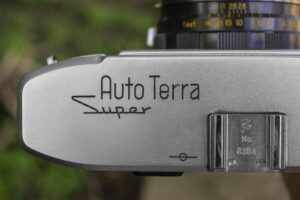 Using a tip from my own Buying Cameras on eBay article, I was patient and persistent, and then to my surprise one morning I saw one in clean condition, in it’s original case with lens cap and user manual for the low, low Buy it Now price of $49.99. SOLD! I quickly paid for the camera and was on pins and needles awaiting for it to arrive.
Using a tip from my own Buying Cameras on eBay article, I was patient and persistent, and then to my surprise one morning I saw one in clean condition, in it’s original case with lens cap and user manual for the low, low Buy it Now price of $49.99. SOLD! I quickly paid for the camera and was on pins and needles awaiting for it to arrive.
I won’t duplicate too much here of what I’ve already written in my review, but the Auto Terra Super quickly became an immediate favorite of mine. I’ve always enjoyed the sound of wind up cameras. The mechanical clicks and whizzing gears the camera makes as it exposes an image and advances the film is hugely appealing for me. The front shutter release is one of the few I’ve found on a rangefinder camera, but also is one of my favorites on any camera. I like front shutter releases like those found on Miranda SLRs as the action of pressing the shutter release stabilizes the camera into your face, allowing you to more securely hold it at slower shutter speeds.
Everything about the look, sound, and usability of the Auto Terra Super was excellent, but when I saw the images it made, I was hooked. On paper, there aren’t too many 4.5cm f/2.8 lenses that elicit much excitement from collectors, but this 5-element Heliar design lens punches way above most other f/2.8 Japanese lenses. To say that I loved the images I got from the camera was an understatement.
Since writing my review, I’ve come back to the Auto Terra Super a number of times and am certain I will continue to do so in the future. This is without a doubt one of my favorite cameras of the year and will likely remain that way for many years to come.
Konica FS
As the only SLR on this list, it would suggest the Konica FS was my favorite SLR of 2022. Looking back at what I shot and reviewed, there are certainly more prestigious and feature filled SLRs like the Pentax LX, Nikon F3, and the AGFA Selectaflex that I could have chosen from.
Thinking back on those three cameras, the Pentax LX was a loaner and wasn’t in the best of operating condition. While I did very much like shooting it and found it to be a very capable entry into Pentax K-mount cameras, the prices for them are through the roof, and from talking about that model with other collectors, they suffer from some strange electrical anomalies that are difficult to track down. Reputable Pentax repair people like Eric Hendrickson specifically call out the LX as a model they won’t touch due to these issues, so it makes this a difficult model for me to claim as one of my favorites of the year.
The Nikon F3 could possibly be one of the greatest Nikon SLRs I’ve shot, but it is difficult to highlight as there are so many other great Nikon SLRs, and I just don’t think the F3 is significantly better than those. Sure, it’s a great camera, but you all already knew that before I wrote about it, and there really wasn’t anything new or exciting that shooting that camera brings to the table.
If I was writing about my three favorite looking cameras, the Selectaflex would definitely take the cake as this is one beautiful camera. This model has an extremely high build quality, excellent chrome, excellent ergonomics, and even though it has “only” an f/2.8 lens, makes beautiful pictures, but as a user, it is quirky, the film advance is very tight, and it being a leaf shutter SLR, I know that this camera could die at any time, so I would hesitate for it to be one I would want to come back to often.
That leaves me with the Konica FS, a rather basic and simple SLR that is overlooked by many other collectors. Like the LX and F3, the Konica FS makes excellent photos, but in it’s simplicity, does everything I need from an SLR, and nothing I don’t. Using the FS felt familiar to me the very first time I picked it up. Konica certainly made other great cameras, but the FS just felt natural to me, as if I had been using it for years. I can always get a feel for how much I like a camera when I am shooting one based on how quickly I can go through a roll of film. Some cameras take months for me to finish a roll, but in the Konica, I was finishing rolls the same day I loaded them.
This is the perfect example of “less is more”. An uncluttered, easy to use SLR that has excellent build quality, has an even more-excellent-er lens, and a camera that I really feel I can depend on. Since publishing my review of the Konica FS in September, I’ve shot it a couple more times and have enjoyed it more and more each time. That’s just not something I can say about the Pentax LX or the Nikon F3.
Zeiss-Ikon Contax I
Best of lists can sometimes be hard to make. How do you pick the top 10, top 3, or even top 1 camera you’ve used all year? Coming up with my favorite camera I’ve used all year when I have constant access to some of the coolest cameras ever made would likely have been a daunting task for every year…except 2022.
For me, choosing my favorite camera this year was very easy. The Zeiss-Ikon Contax I is a camera that I had been aware of for quite a number of years, but I fell victim to the commonly cited claims that it was an inferior camera plagued by reliability issues, that it had poor ergonomics, and that the later Contax II and III cameras were superior in every way.
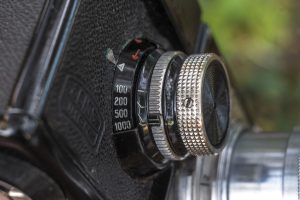 I had handled my fair share of Contax II and III cameras, plus the Soviet Kiev cameras, and while I do enjoy shooting them, they don’t stand out in any way better than one of many other amazing 35mm rangefinders that I own, so for me to get too excited about an earlier Contax that from what I was reading, was terrible in a variety of ways, I wasn’t in any hurry to find one.
I had handled my fair share of Contax II and III cameras, plus the Soviet Kiev cameras, and while I do enjoy shooting them, they don’t stand out in any way better than one of many other amazing 35mm rangefinders that I own, so for me to get too excited about an earlier Contax that from what I was reading, was terrible in a variety of ways, I wasn’t in any hurry to find one.
Then I got one. Although this camera came to me in extremely good cosmetic condition, as most of them are, the shutter was dying. The silk ribbons that hold the vertically traveling shutter curtains together were frayed and were on the verge of snapping. The rangefinder, although accurate, was dirty, and the slow shutter speeds were completely inoperable. I was fortunate to have someone willing to have this camera CLA’d for me by the only person in the United States who will touch a Contax I and after several months of waiting, I was finally able to use a perfectly working, and fully serviced Contax I.
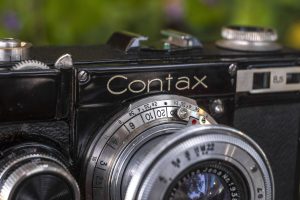 By far, the Contax I is the camera that surprised me the most. Everything about the camera, from it’s tactile feel, to the ergonomics, to the viewfinder, to the sound of the shutter firing, to the images I got from it were top notch. I loved shooting the Contax! The things about it’s design that were supposed to be terrible, such as the sharp corners, combination of shutter cocking knob and speed knob, and small viewfinders were not a problem for me at all. Although I have shot my fair share of other Contaxes, this one was the nicest. That it was also the oldest, best looking, and had a unique operation all added to the appeal for me.
By far, the Contax I is the camera that surprised me the most. Everything about the camera, from it’s tactile feel, to the ergonomics, to the viewfinder, to the sound of the shutter firing, to the images I got from it were top notch. I loved shooting the Contax! The things about it’s design that were supposed to be terrible, such as the sharp corners, combination of shutter cocking knob and speed knob, and small viewfinders were not a problem for me at all. Although I have shot my fair share of other Contaxes, this one was the nicest. That it was also the oldest, best looking, and had a unique operation all added to the appeal for me.
The original Contax was designed to go head to head with the original Leica, and as one of the very few people today who have had the chance to shoot both a perfectly working Contax I and Leica Model A, I wholeheartedly prefer the Contax. This is an impressive camera with impressive performance, is easier to change film in, has a wider and more accurate rangefinder, and access to the best Zeiss lenses of the 1930s. I love the Contax I, and not only is it my favorite camera of the year, it is one of the very few I’ll never sell. At whatever time it’s my time to go to the great camera store in the sky, this camera will be in my will, identified as one my kids can either keep for themselves, or sell.

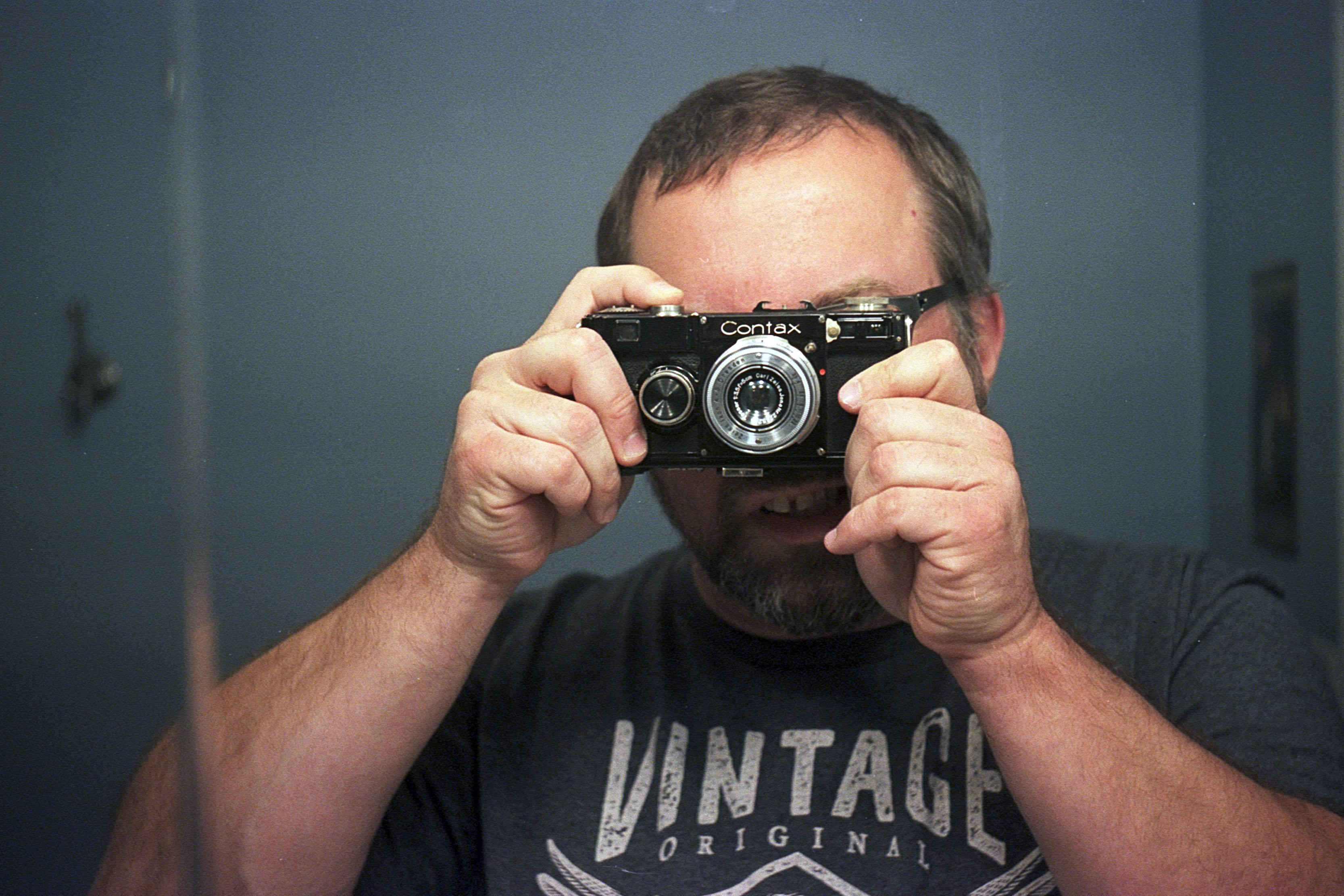
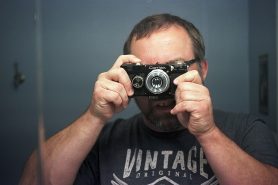
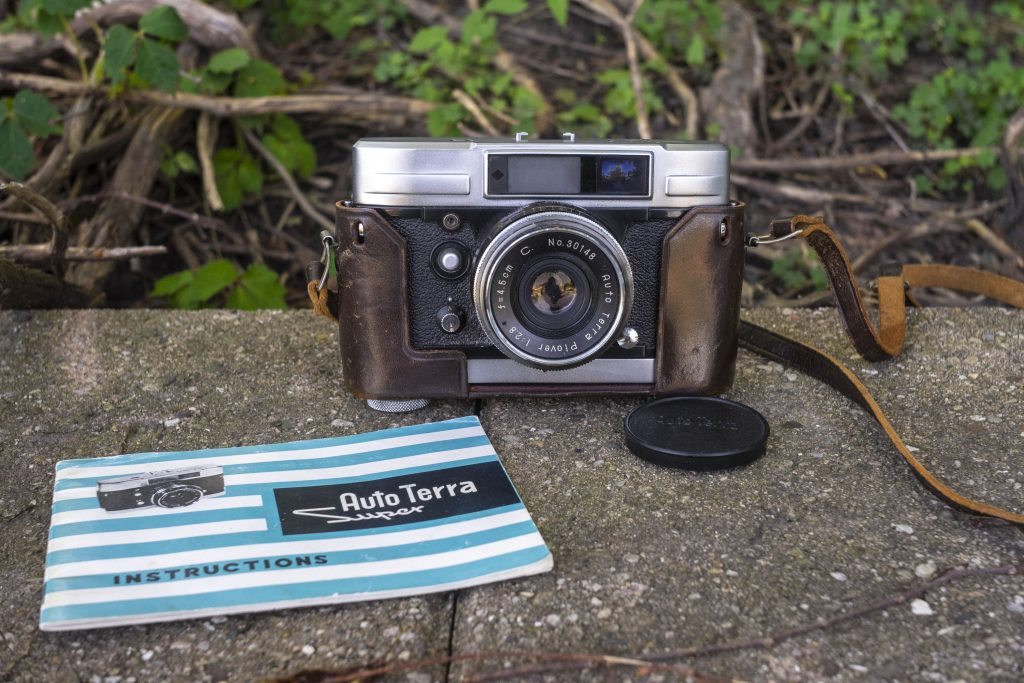








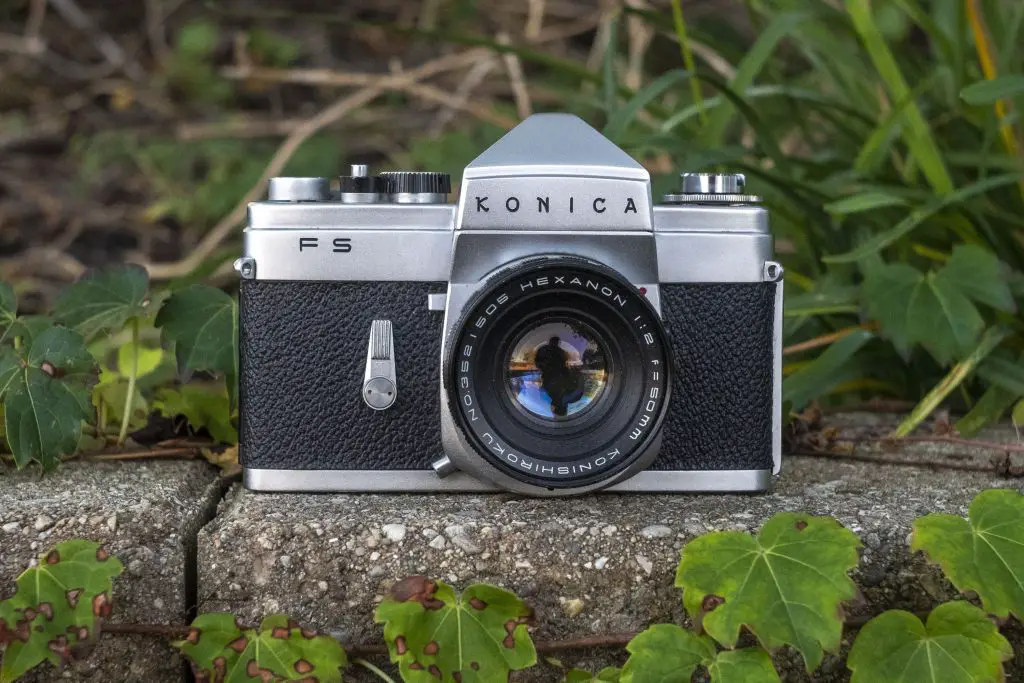
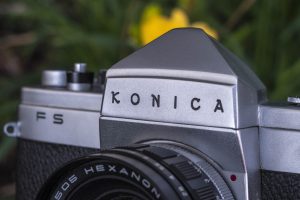








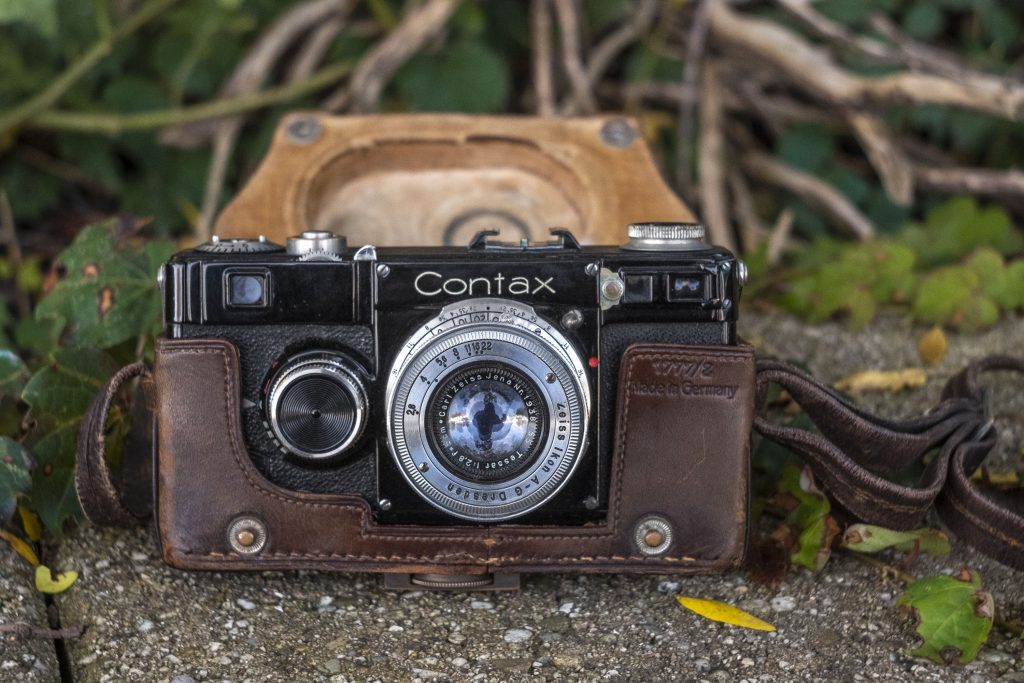








That contax is absolutely beautiful, no wonder you love it.
Love the black and white images out of the Contax! Even though the cat of course is a gold standard subject. The restaurant interior shot suits the style in particular.
Here’s hoping you’ll get to use it a lot, and that with frequent use it’ll keep working for a few decades. Such a nice camera, and in my books with one of the nicest rendering lenses ever made.
I wonder if future repair experts – at a time when vintage correctness simply becomes too hard due to parts availability – will some day be able to replace those silk strings in the shutter with something harder wearing along the lines of kevlar fibre string.
Given the difficulty getting one serviced nowadays I doubt one of these is in my future, but at least the 50mm 2.8 Tessar on my Contaflex produces very similar images, to my eye. I’m sure the Contax is a lot easier to operate (the contaflex is slow with it’s linked aperture/shutter controls, agh!) but I’ll occasionally persevere just to get to use it’s Tessar lenses. Character-wise it’s the perfect sweet spot for me between ‘a bit too vintage/soft’ (most pre-war, novars etc) and ‘modern’ lenses (anything that fits on a Nikon F or later). They have a beautiful look and suit film resolution perfectly.
Thanks for the comments Peter. This is definitely one of my favorite cameras, and one I will use often.
Concerns about keeping these cameras running are definitely real, but thankfully, we have some new people starting to learn the art of repairing cameras. Brandom Monroe is one such example who we talked to on Episode 41 of the Camerosity Podcast. Although he hasn’t tried the Contax I yet, he can do the pre and postwar IIs and IIIs. Check it out!
I understand you loved the Konica FS. I don’t know this camera, but the Konica Autoreflex T2 and T3 instead. So well and sturdy built cameras, excellent lenses , on par with Canon, Minolta and Nikon glass.
The shutter priority works very nice, better than on Canon AE1.